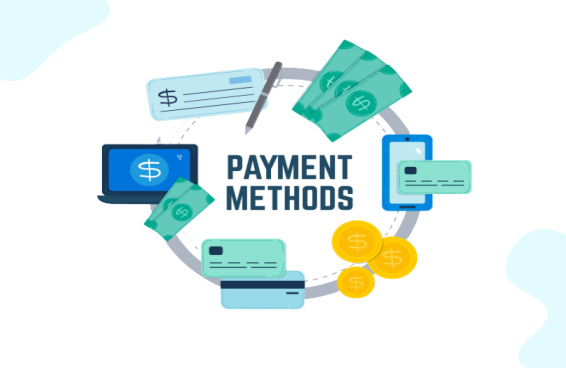
In international trade, how to pay for goods safely and quickly is the concern of every foreign trade practitioner. Here, we introduce you to several common payment methods, including wire transfer, letter of credit, collection, etc., analyze their advantages and disadvantages, and provide specific applicable scenarios to help you find the most suitable payment strategy.
Telegraphic Transfer (T/T)
Telegraphic Transfer (T/T) is one of the most commonly used collection methods in international trade, characterized by simple operation and rapid fund transfer, but also accompanied by certain risks.
Advantages:
Fast arrival: usually the supplier receives the money in a few working days.
Easy to operate: the process is relatively simple and applicable to most transactions.
Lower cost: lower handling fees compared to other methods.
Disadvantages:
Higher risk: especially in the prepayment mode, there is a risk that the buyer will not ship the goods; in the payment mode of seeing the bill of lading, there may be problems with the quality or quantity of the goods.
Applicable contexts:
Prepayment: applicable to trading partners with long-term cooperation and high mutual trust.
Payment at the sight of bill of lading: applicable to smaller transaction amount or existing cooperation basis.
Letter of Credit (L/C)
Letter of Credit (L/C) is a payment method opened by the bank to guarantee the interests of both buyers and sellers, which has high security, but the cost is higher and the operation is more complicated.
Advantages:
High security: banks intervene to ensure the interests of both buyers and sellers.
Credit guarantee: the seller only needs to provide documents according to the contract requirements to receive payment from the bank, which effectively reduces the credit risk of both parties in the transaction.
Internationally recognized: widely accepted and used, especially in large-value transactions.
Disadvantages:
High cost: involves a variety of fees, such as issuance fee, notification fee, negotiation fee, etc.
Complicated operation: need to prepare a large number of documents to the bank for review, the process is complicated.
Longer time: from the issuance of the certificate to the collection of a long time, not suitable for urgent payment.
Applicable context:
Large transactions: applicable to transactions with large amounts, low frequency of transactions and low mutual trust, or transactions requiring bank guarantees.
First time cooperation: when both parties cooperate for the first time, letter of credit is a better choice.
Collection (Collection, D/P, D/A)
Collection is divided into payment and delivery (D/P) and acceptance and delivery (D/A), is a kind of collection method between wire transfer and letter of credit, which has certain security and is easier.
Advantages:
Moderate risk: safer than wire transfer and cheaper than letter of credit.
Easy to operate: the documentation requirements are relatively loose and the operation is simpler.
Disadvantages:
Uncertainty: the buyer may refuse to pay or delay payment, especially in the D/A mode, the risk of default is higher.
Applicable context:
Medium-amount transactions: applicable to transactions with medium amount and already have a certain cooperation basis.
Relatively trusted partners: used when the buyer and seller already have a certain foundation of trust.
Open Account
Open Account is a high-risk, highly flexible way to collect payments, suitable for long-term partners and competitive markets.
Advantages:
High flexibility: simplifies the operational process and increases the flexibility of the transaction.
Capital turnover: buyers can utilize sales proceeds to pay for goods, improving capital turnover.
Disadvantages:
High risk: the seller bears the risk of the buyer defaulting or refusing to pay.
Applicable Context:
Long-term partners: suitable for long-term cooperation and good credit customers.
Competitive market: offer superior payment terms to attract customers.
Cash Against Documents (CAD)
Advantages:
Low cost: lower handling fees.
Lower risk: buyer pays before obtaining shipping documents, protects seller's rights and interests.
Applicable context:
Relatively trusted partner: applicable to transactions where both parties have a certain basis of trust and the transaction amount is moderate.
Western Union
Western Union is the world's leading express money transfer method, which can be sent and withdrawn in most countries around the world. The handling fee is borne by the buyer and requires the buyer and seller to go to the local bank to operate in the field. The buyer can withdraw funds at any time when the seller has not received payment.
Applicable context:
Urgent arrival: suitable for small, urgent arrival cross-border payments.
MoneyGram
MoneyGram, also known as MoneyGram Money Transfer, is a global money transfer service for individuals and businesses that offers a fast and convenient way to transfer funds. MoneyGram is characterized by its efficiency, usually delivering money to recipients in a relatively short period of time, greatly reducing the time funds are in transit.
Applicable context:
Urgent to account: suitable for users who are in urgent need of funds or have high requirements for the arrival time of funds.
Third-party payment platforms
Third-party payment platforms such as PayPal and Alipay are widely used in cross-border e-commerce due to their convenience and security, but the cost is high.
Advantages:
Convenience: easy to operate, real-time arrival.
Security: provides transaction protection and reduces risk.
Disadvantages:
Higher fees: platforms charge a certain percentage of handling fees.
Amount limit: certain platforms have a cap on the amount of a single transaction.
Applicable context:
Small transactions: applicable to cross-border e-commerce transactions with small and frequent amounts.
Initial transaction: used when first cooperating to build trust.
There is no one-size-fits-all program for the selection of foreign trade collection methods, and it needs to be considered comprehensively based on various factors such as the transaction amount, cooperative relationship, and market environment. By reasonably selecting and combining different collection methods, you can effectively reduce the risk, guarantee the smooth progress of the transaction, and escort the internationalization development of the enterprise.
Written by Karla
